One of the things that gardeners love most about philodendrons is that they’re pretty much foolproof.
They aren’t one of those species that is constantly teetering on the edge of disaster. And they don’t need tons of maintenance like regular pruning to keep them alive.
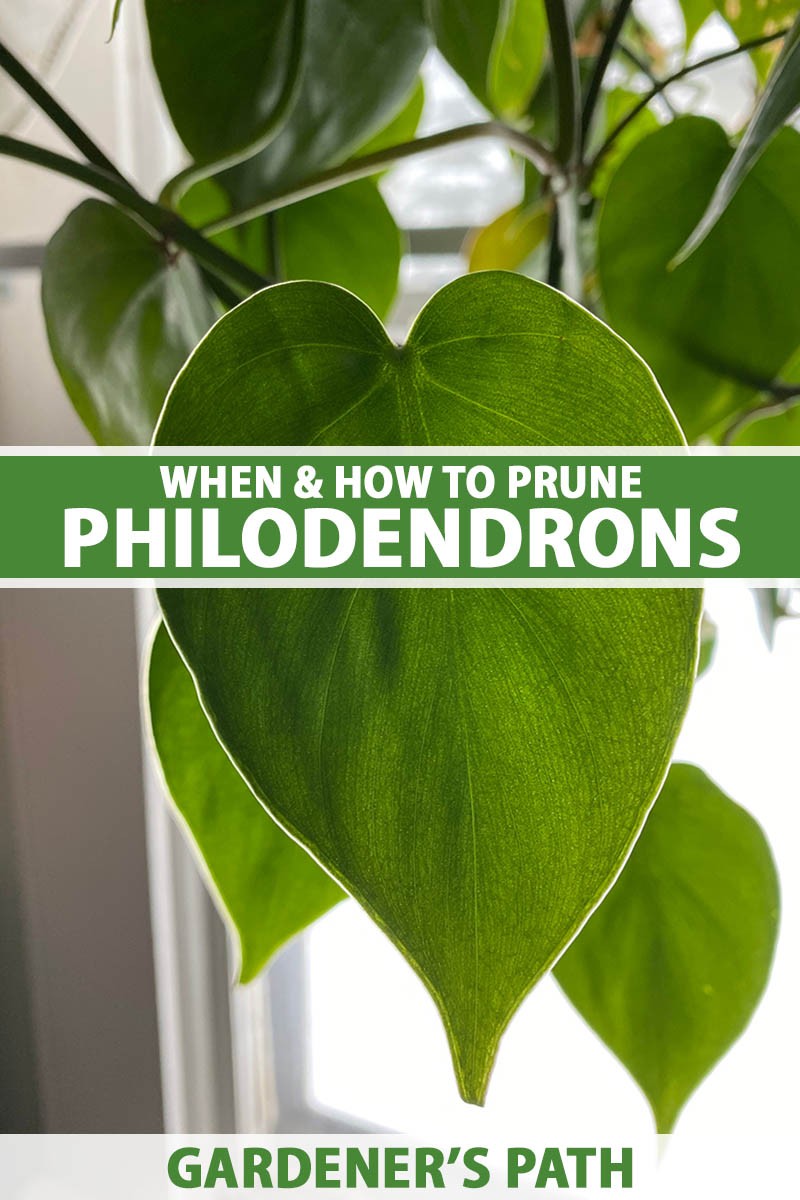
We link to vendors to help you find relevant products. If you buy from one of our links, we may earn a commission.
But it sure doesn’t hurt things to give them a little snip-snip now and then.
While you don’t need to be an experienced cosmetologist to give your philodendron a haircut, doing it wrong can leave your plant looking like someone put on a blindfold and went to town with a pair of clippers.
To help you make your philodendrons look perfect, we’re going to go over the following:
When and How to Prune Philodendrons
There are dozens of species and cultivars in the Philodendron genus, and they can be terrestrial (growing in the ground), epiphytic (growing on other plants), or hemiepiphytic (both).
And that means the necessary care required can vary.
Heartleaf vines have different pruning requirements than something more upright like a horsehead philodendron.
Pay attention to the growth habit of your particular specimen before you commit to any cuts.
Why Prune These Plants?
Remember, you don’t technically have to prune a philodendron. So why go to the trouble if it isn’t strictly necessary?
There are several reasons.
First, if your philodendron has dying, diseased, discolored, or pest-infested foliage or vines, it’s best to get rid of them to boost or protect the overall health of the plant.

Same goes for really leggy vines.
Really, any area that isn’t adding to the look of the plant can go.
But make sure you don’t overdo it – cutting back more than a quarter to a third of a houseplant at a time can stress or shock it, and removing too much of the foliage that’s necessary for photosynthesis at a time may be too much for it to withstand, leading to dieoff.
Sun exposure is also worth considering. Though these plants don’t generally need much, and vines tend to spread, true legginess is generally a sign of a lack of sun.
Moving your plant to a better spot can easily correct this, resulting in healthier new growth after you’ve given it a trim!
It’s also beneficial to do some trimming to create a tidier appearance, or to constrain an overly-enthusiastic plant.
Just one thing to keep in mind here – if your plant is not otherwise healthy, and it’s showing certain widespread symptoms of a struggle like wilting, yellowing, or discolored leaves, pruning alone won’t solve problems like root rot or excessive sun exposure.
They don’t need much, but be sure to provide proper care as well as giving your plants a haircut here and there.
Learn more about philodendron cultivation and care in our guide.
How to Prune
Pruning is best done in spring or fall, but you can do it at any time of year. If you prune in winter, you might not see new growth until the spring.
Before you make a single cut, make sure your tools are clean. Wash them in soapy water or wipe them with a 10 percent solution of one part bleach to nine parts water.
The last thing you want is to prune your philodendron to make it healthier, only to introduce pests or diseases!
Also, make sure you’re wearing gloves. You don’t want to get the sap on your skin.
Never prune off just the leaf itself, leaving behind the stem or petiole which attaches it to the main stem or vine. A new leaf won’t grow in its place, and you’ll be left with an ugly bare stump.

Make your cuts just above a leaf node to encourage branching.
For species with woody stems, don’t ever cut the woody, hard part of the stem. It won’t always send out new growth and might just die back. You can cut the soft, green growth on these without worrying.
With species that send out multiple stems from the crown, you can trim the stems back to the soil and your plant will send out new growth, so long as you leave a few stems alive in the meantime to support the roots.
While the technique used for pruning philodendrons is the same whether it’s for shape or the health of the specimen, there are a few differences to consider between the two. Let’s take a look…
Pruning for Shape
When pruning for shape, take a look at the overall shape of the plant to start.
If you have a weeping philodendron, are there any vines that extend way beyond the rest? Or any vines that look leggier or more sparse than the others?
Off they go.
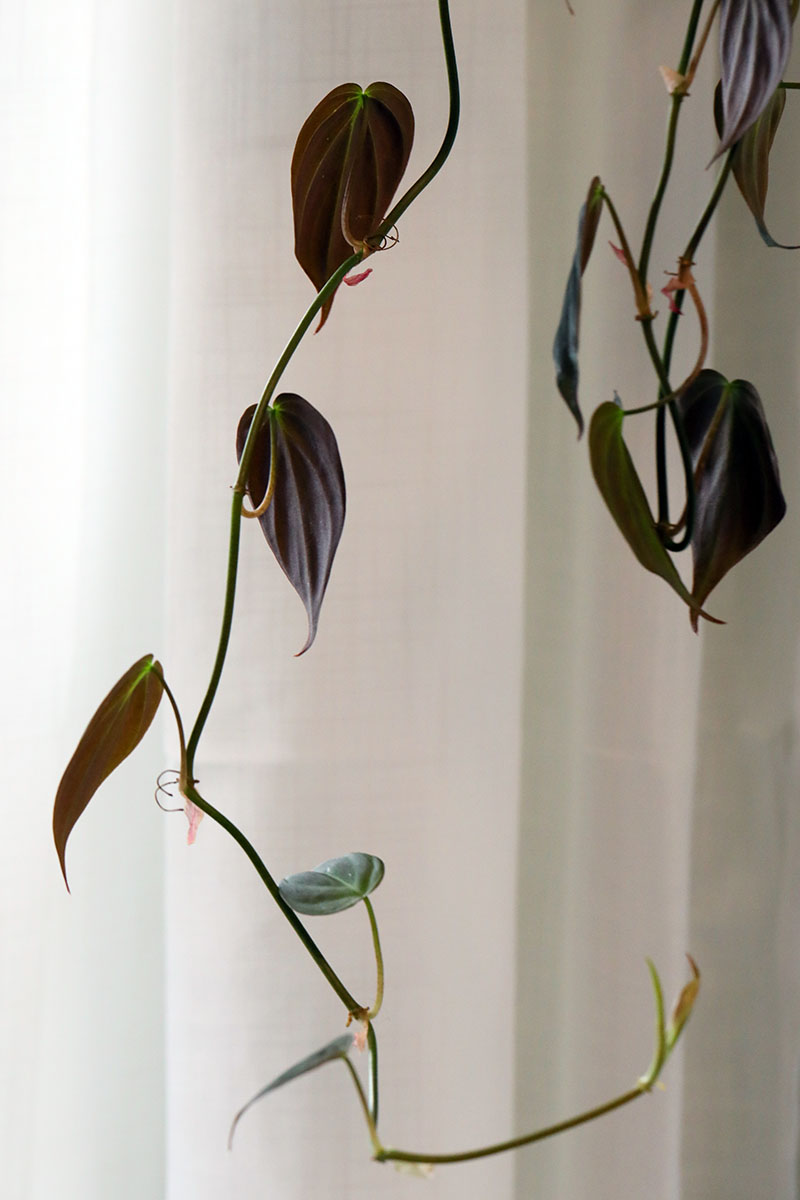
For an upright philodendron, look for leaves that fall to the side or extend way above the others.
Take them out.
Regardless of the growth habit of your specimen, you can always prune off some of the older growth to encourage new, young growth.
The goal is to create a tidy, compact appearance without stragglers or branches that detract from the overall look.
This type of cutting also helps to keep an unruly plant somewhat in check.
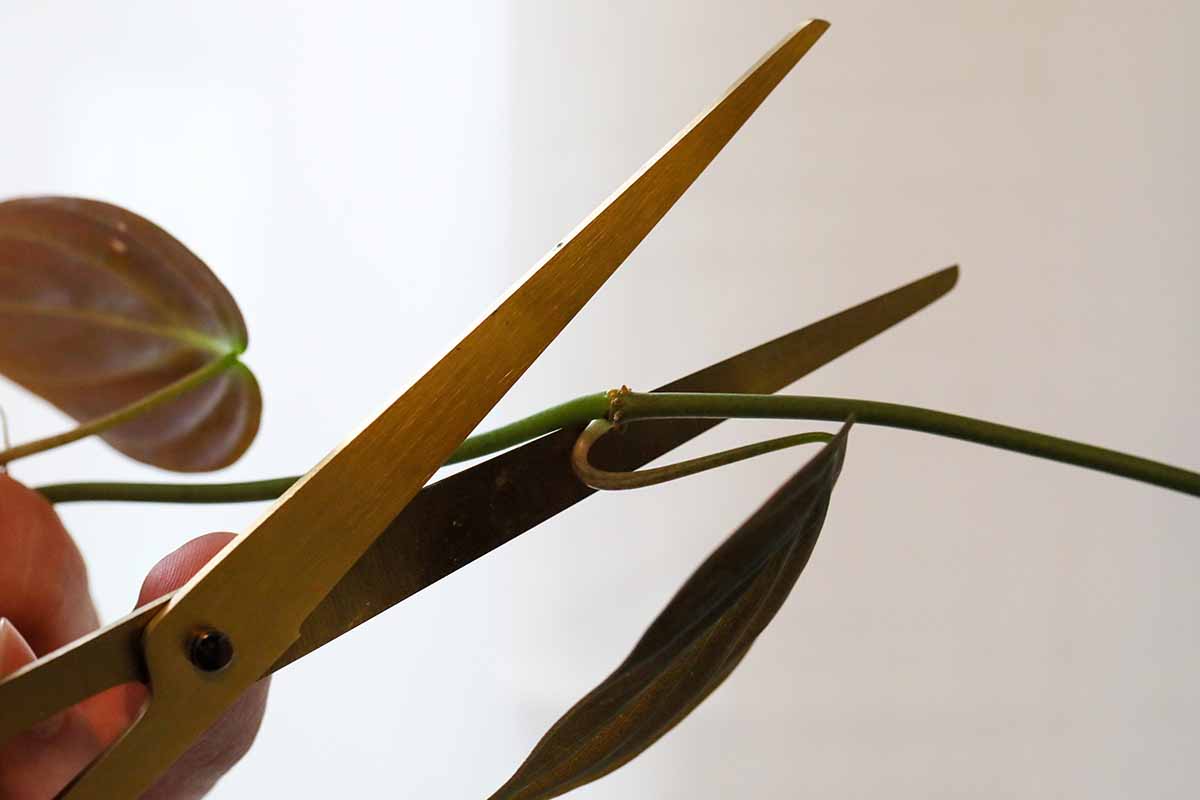
The next step is to prune to encourage branching. Each time you make a cut, the plant will send out new branches so long as you cut just above a leaf node.
If you have a lopsided plant, which is common for vining types, you can strategically prune to encourage bushier growth in the areas that are sparse, and to trim back areas that are extremely long.
Pruning for Health
Sometimes a little snipping is necessary to keep your plant healthy. If you see any yellowing, brown, or otherwise discolored leaves or branches, take them off.
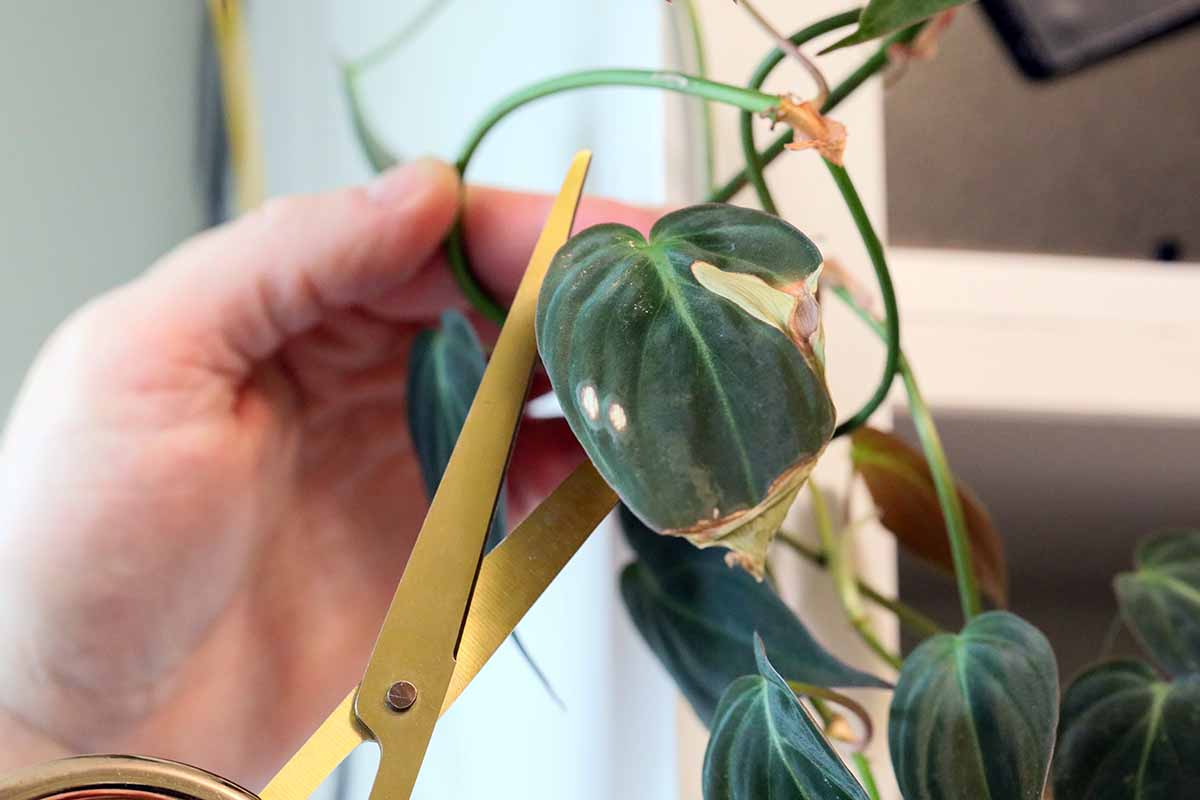
If a stem or leaf is heavily infested with pests like aphids or mealybugs, it’s usually easiest to just cut it out.
Then there are the leaves and branches that are broken when someone bumps them or a pet gets a little too close for comfort. Don’t try to save those. Just cut them off.
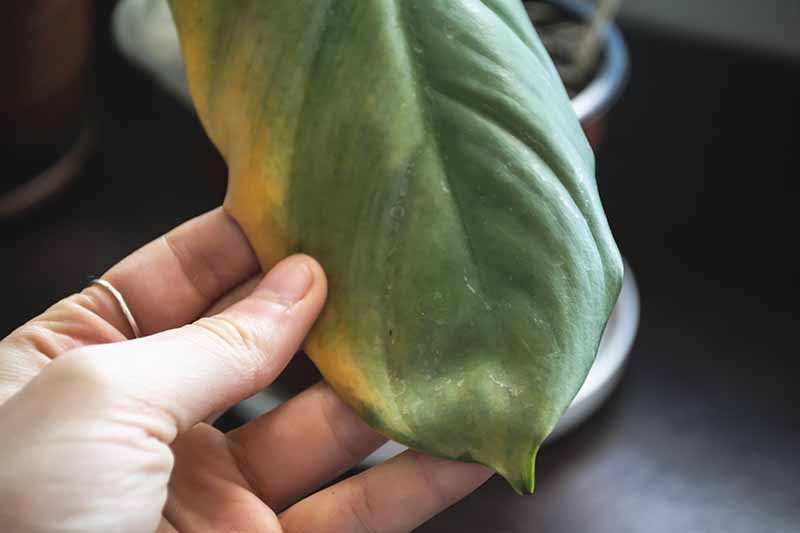
Finally, all philodendron leaves eventually age and die, and are replaced by new growth. There’s no way to stop natural senescence and it’s best to just remove the leaves that are past their prime.
While you’re at it, get in there and look at the soil surface. You’ll probably see some dead foliage. Clean this up too.
Not only will your plant look better, it’s healthier to remove dying material that’s taking up resources, and any that might attract pests and pathogens when it falls into the pot.
Taking Cuttings
While you’re removing stems to improve your plant’s appearance, save any stem that has at least four inches of length, one node, and one leaf.
You can use these to plant cuttings and propagate more plants.
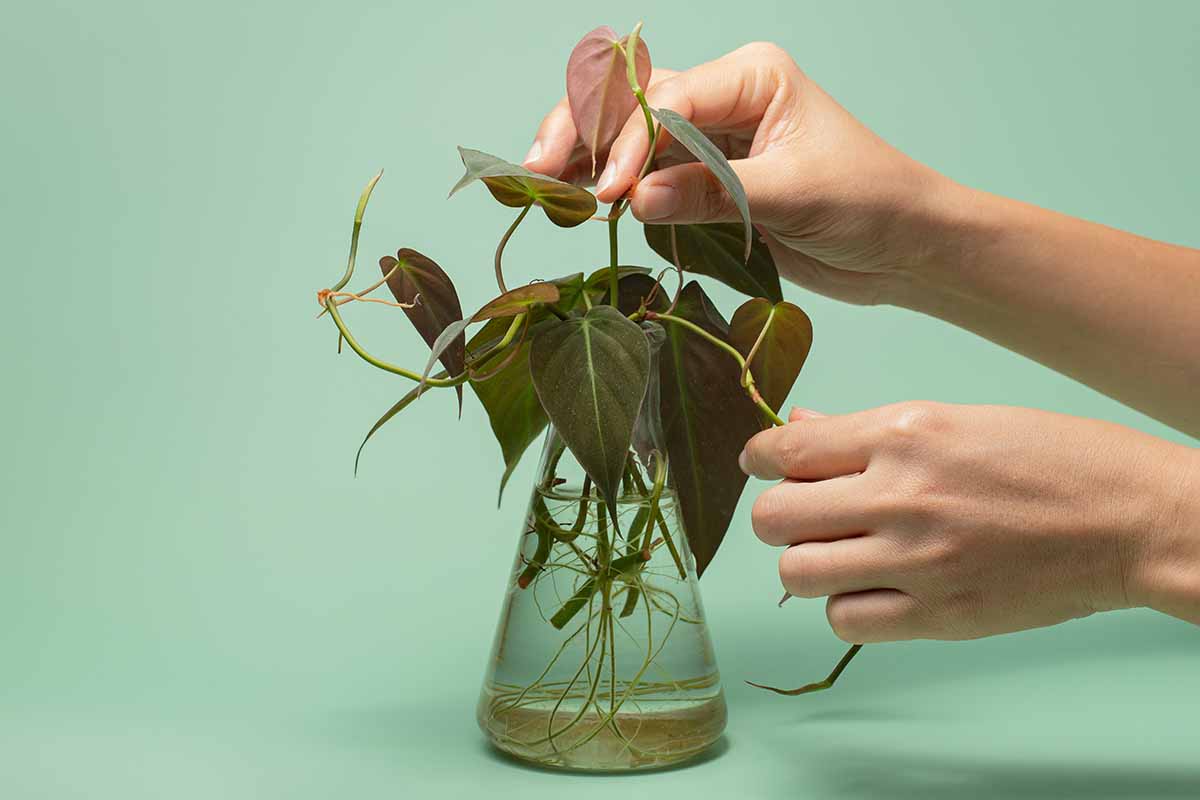
Don’t use unhealthy plant material for propagation.
Put these trimmings in water or soil and place your propagation vessel in a spot with bright but indirect sunlight to root.
Give Your Philodendrons a Fantastic Haircut
Your philodendrons will probably survive just fine even if you don’t pay them a visit with the clippers.
But we don’t grow plants to just have them limp along, right? We want them to be so impressive and happy that people marvel when they see them for the first time.
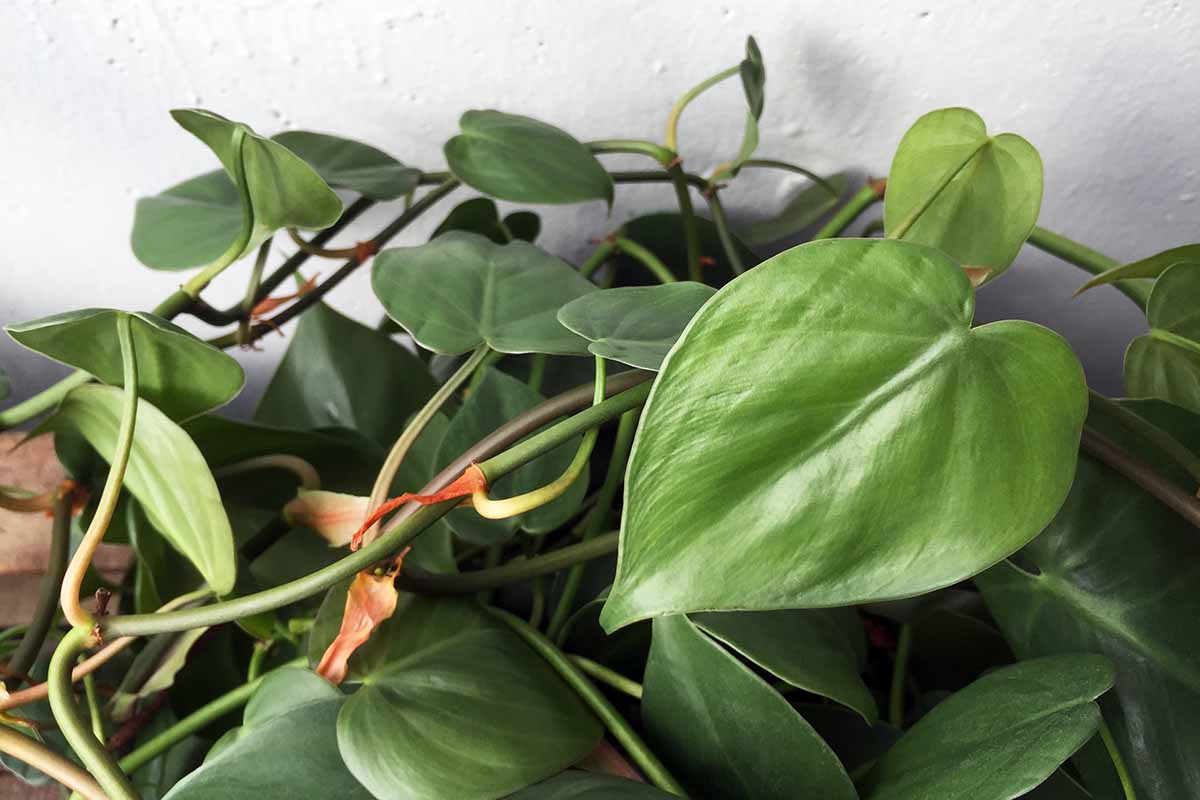
One of the secrets of cultivating a stunning plant is pruning the right way.
What kind of philodendron are you growing? What kind of pruning does it need? Let us know in the comments.
If you’re looking for even more help to make your houseplants look their best, we have a few other guides that you might find useful, starting with these:
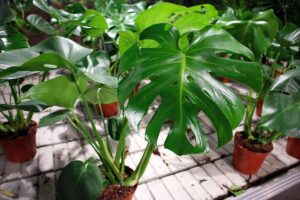
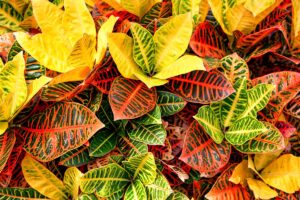

I have a bifurcated leaf philodendron that has been happily growing in water for several years. It is getting too tall for its big vase. I do not want a taller vase. Can I shorten it by cutting a few inches off the main root (trunk?)….
Hi Reen, as long as you a few leaves remain on the main trunk, it’s totally fine to prune it back to shorten it a bit. Just don’t take off more than a third of the length at one time.